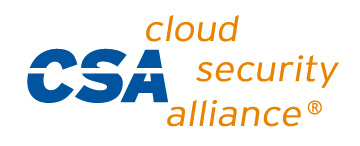
Series 2 of 3 Big Problems in Recruitment (And How to Solve Them!)
We’ve said it before and we’ll say it again: Recruiting is hard, and the talent struggle is real. Not to mention, it’s expensive, with more than $240 billion spent annually on talent acquisition in the United States alone. So how do talent leaders and recruiting teams optimize their strategies and time so that they can bring in quality talent more quickly with less cost and less stress? It’s a good question, and one that we’re going to help you solve in this second blog series of “3 Big Problems in Recruitment and How to Solve Them.” As a refresher, the three big problems in recruitment are: Talent teams aren’t alone in the scramble for more strategic time. Like many organizational teams and employees, the pressure is on to do the job, and get results, pronto. The problem with this mentality, especially in talent acquisition, is that you may be spending the time you do have pursuing the wrong activities. For recruiters, that means more time and money wasted chasing the wrong candidates, and fewer hours available to strategize. In other words, it’s critical to get the job description just right. Here are some tips to help you close the gap between what hiring managers think they need and what they actually need for the business. Consider your organization’s online presence – how is it working for or against you? Everything from your career site to your Glassdoor reviews could be drawing candidates in or pushing them out. When it comes to employee reviews, spend time responding to and engaging with public comments, whether or not the feedback is glowing. According to Glassdoor, 61 percent of the site’s users “agree that their perception of a company improves after seeing an employer respond to a review.” According to our audit of the 2018’s 63rd annual list of Fortune 500 companies, nearly 20% of companies have a very limited or nonexistent quality of content, videos, and photos on their career sites. If you’re just not sure how to start personalizing the candidate experience, ask your most recent hires! You can develop free surveys online and send them to new hires right after they accept the offer, after their first week on the job, or after 30 days. In return, you’ll get free and useful information on the candidate’s perception of the hiring process, learn what attracted them to the organization, and find out exactly how they found you. Data-driven recruiting is not a fad, it’s here to stay and will continue to revolutionize the world of talent acquisition and talent relationship marketing. So, spend some time honing your skills around collecting and interpreting data to become savvier and more strategic with your recruitment efforts. *** Which of these five tips can you see yourself and your team incorporating to increase the quality of strategic time at work? Let us know in the comment section below! Next up in our three-part series on how to solve the three biggest problems in recruitment is all about inefficient HR tech. It’s going to be a juicy one, so check back in with us! We solved the first problem for you here, so let’s dive into problem #2: Lack of strategic time.
The short and sweet reason why this happens?
As the candidate journey evolves, so, too, must the focus of talent teams on the candidate experience.
Today’s candidates expect an online job search and application experience to mimic the effortless and, dare we say it, fun e-commerce experiences provided by giants such as Amazon, Spotify, and Netflix. Companies who do not upgrade their strategies and systems to provide this type of experience risk losing top talent to competitors who can.
But where do talent teams begin? The reality is, you have to reframe and refocus the time you do have and work from a candidate-centric approach. Here are five ways you can get that strategic time back in your talent organization today.

Stop wasting time screening unfit candidates by making sure you’re attracting the right candidate for the role and culture.
PRO TIP: Leave out the jargon and don’t pull any punches in the interview process to keep the candidate’s experience consistent with the job ad. Save time in the sourcing and interview processes by letting your employer brand work for you.
Spend less time selling the role or organization in interviews and more time creating valuable content.
Your career site is the face of your employer brand, so what it looks like and says matters. Instead of going into detail about your organization and the interview process on every phone screen, keep your career site updated with critical and engaging content representative of what it means to work for your company. Then, ask the candidate what questions they have about what they read and saw to keep the conversation candidate-centric.Quit guessing about the quality of your candidate experience and ask for feedback directly.
Let the data guide you.
For example, by measuring and tracking your progress, you can identify real-time gaps and opportunities in your process and team, and you may even be able to make a business case for more resources. Just remember, you don’t have to become a data wizard overnight. Start with small wins and incorporate metrics and interpretation-making into your daily workflow.
Get the latest talent experience insights delivered to your inbox.
Sign up to the Phenom email list for weekly updates!









